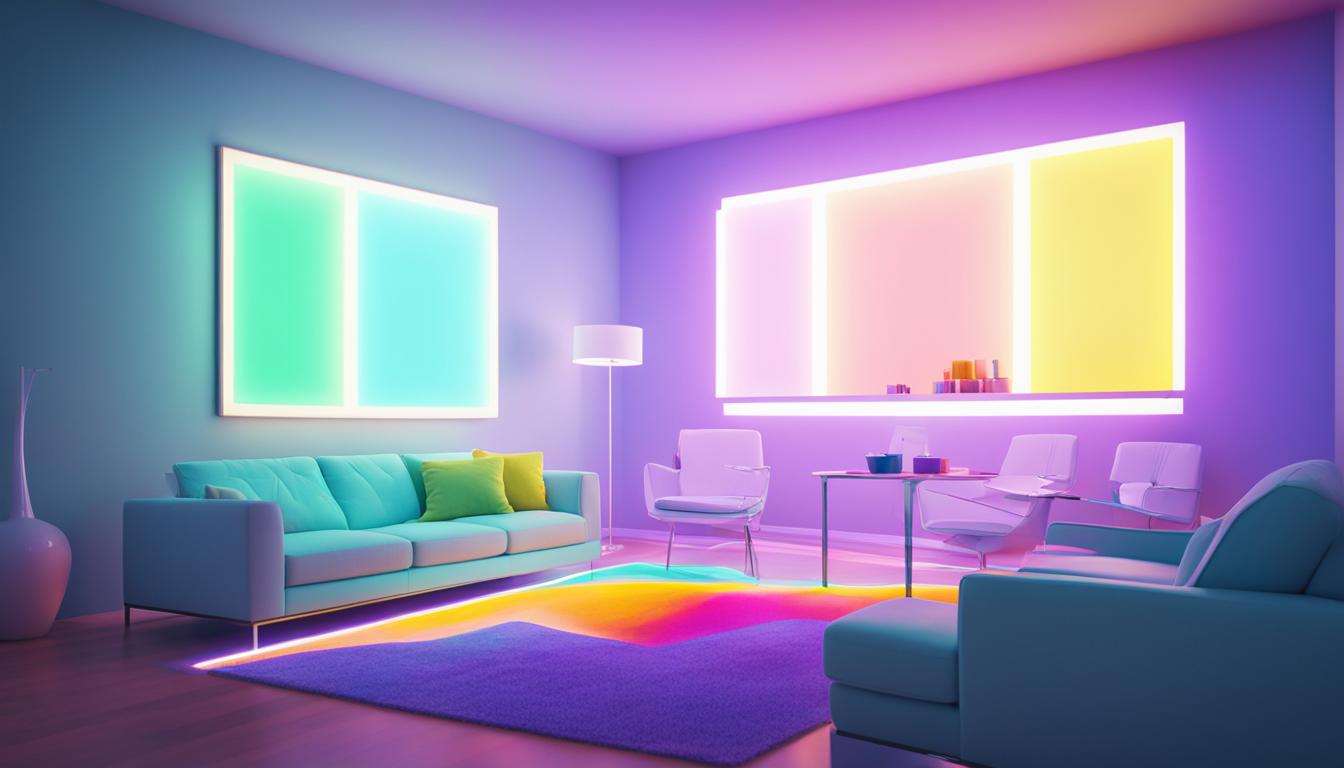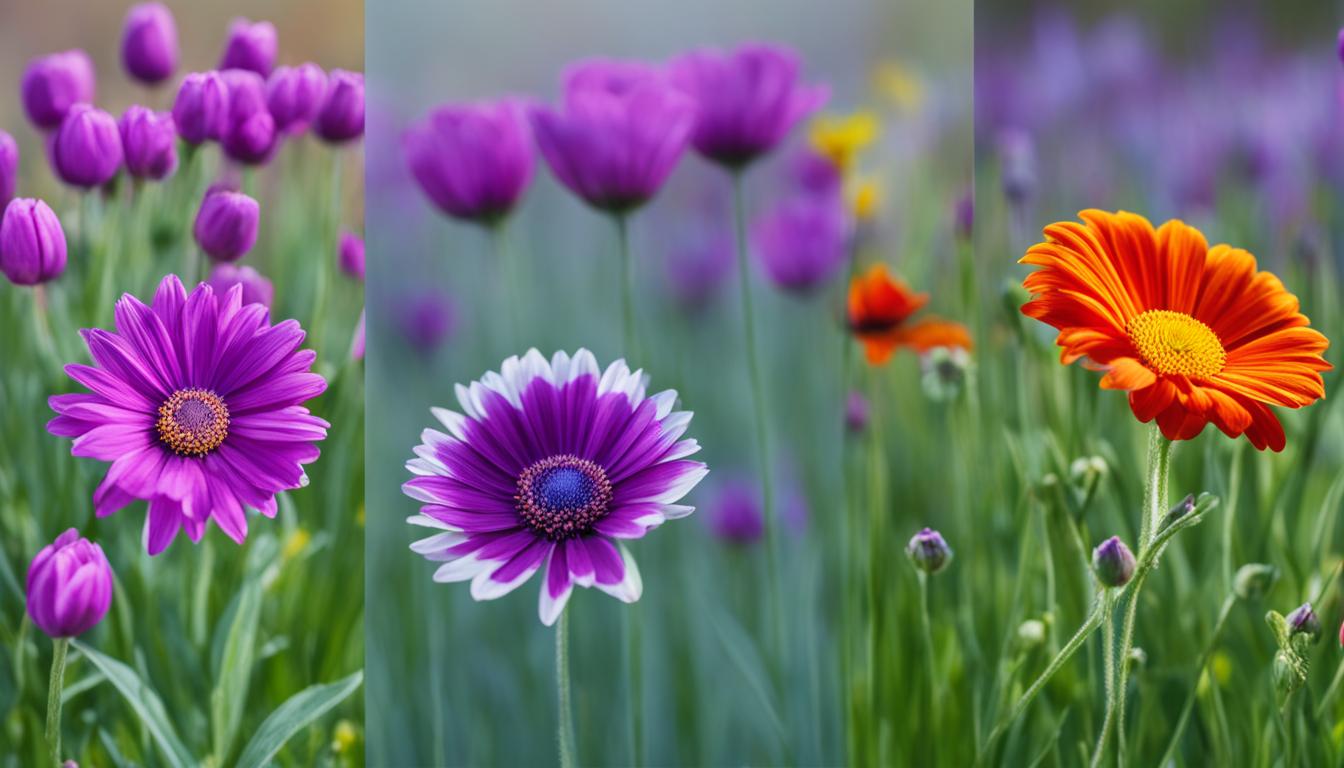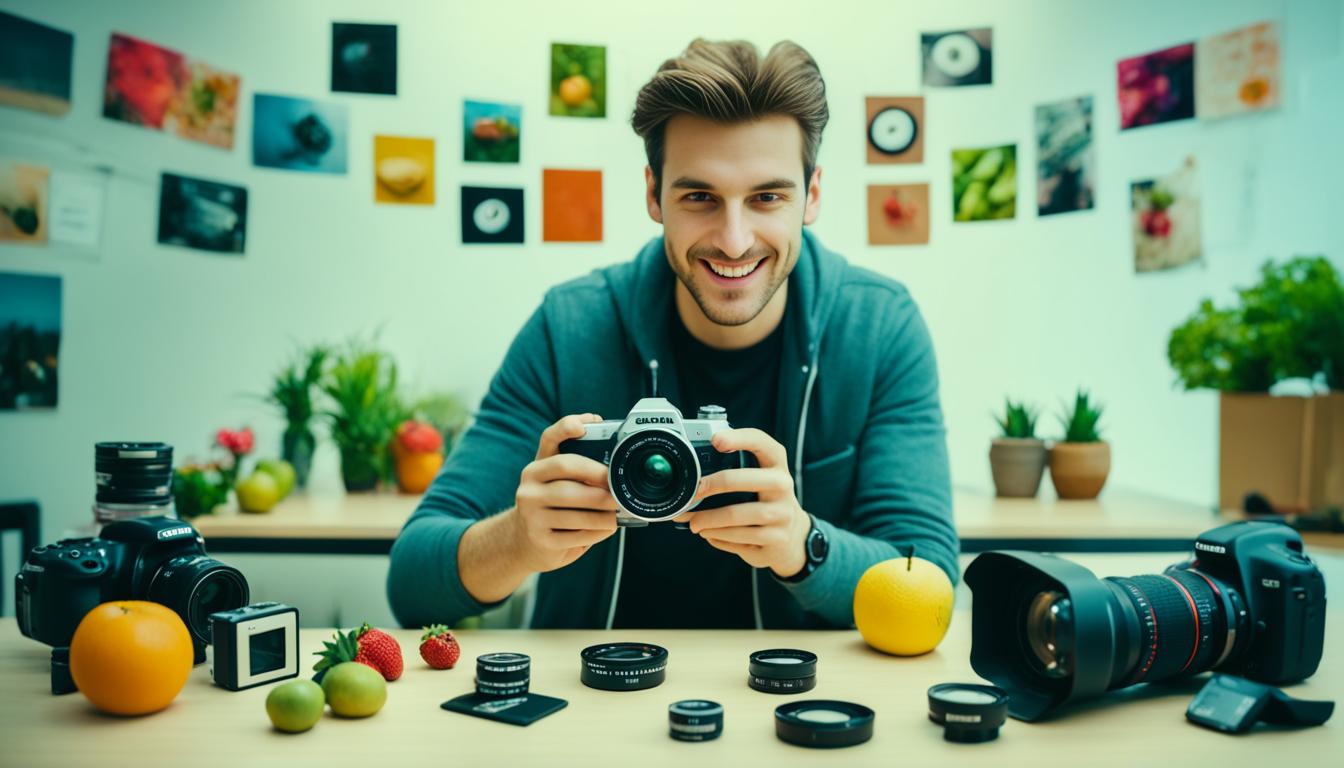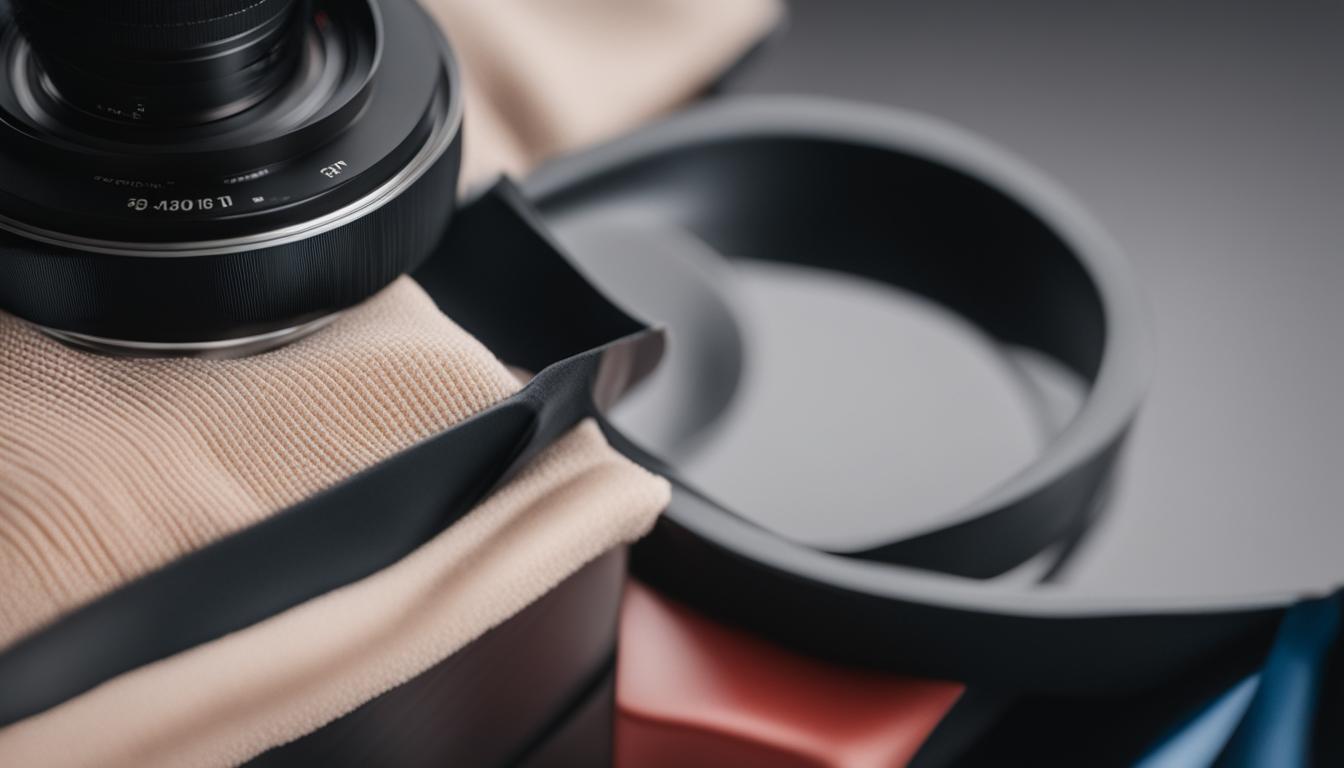Welcome to our guide on understanding white balance and color temperature in photography. Whether you’re a beginner or an experienced photographer, having a good grasp of these concepts is essential for capturing accurate and visually appealing images. In this article, we will explore the basics of white balance, how to adjust it, the importance of getting it right, and the effects of color temperature on your photographs.
Before we dive in, let’s briefly explain what white balance and color temperature are. White balance is the process of removing unrealistic color casts from photos to ensure objects appear white as they do in real life. It takes into account the color temperature of a light source, which refers to the relative warmth or coolness of white light.
Understanding color temperature is crucial because it directly affects the color representation in your photographs. Different light sources emit light with varying color temperatures, ranging from warm tones to cool tones. By adjusting the white balance according to the color temperature of the light source, you can achieve accurate color reproduction and create the desired atmosphere in your photos.
Key Takeaways:
- White balance is the process of removing color casts from photos to achieve accurate color representation.
- Color temperature refers to the relative warmth or coolness of white light emitted by different light sources.
- Understanding white balance and color temperature is essential for capturing visually appealing images.
- Adjusting white balance allows you to correct color casts and create the desired mood in your photos.
- Color temperature affects the overall color cast and atmosphere of your images.
Background: Color Temperature
Color temperature plays a crucial role in photography, influencing the overall look and feel of an image. To understand color temperature, we need to delve into the fascinating concept of blackbody radiation.
Blackbody radiation refers to the phenomenon where an object absorbs all incident light and emits electromagnetic radiation depending on its temperature. This emitted radiation spans a wide range of wavelengths, forming what we know as the color temperature spectrum.
At lower temperatures, the emitted light tends to be in the red or orange end of the spectrum. As the temperature increases, the color shifts towards white and eventually to blue. This change in color distribution is due to the fact that shorter wavelengths carry higher energy.
In photography, color temperature is measured in Kelvin (K). Different light sources have distinct color temperatures, ranging from warm tones at around 1000-2000 K (candlelight) to cooler temperatures of 9000-10000 K (shade or heavily overcast sky). Understanding the color temperature of the light illuminating a scene is crucial for achieving accurate color representation in photographs.
Why is color temperature important in photography?
Understanding the importance of color temperature in photography is key to capturing stunning images that accurately represent the colors and create the desired mood and atmosphere. Different light sources emit light with varying color temperatures, and this impacts the overall color cast and feel of a photo.
By adjusting the white balance of your camera to match the color temperature of the light source, you can ensure consistent and accurate color reproduction in your photographs. The white balance setting allows you to neutralize any color casts and capture the colors as they appear in reality.
The impact of color temperature on photos can be dramatic. Warm light with a lower color temperature, such as the golden hour light during sunset, creates a cozy and intimate feeling. On the other hand, cool light with a higher color temperature, like the light on a cloudy day, can lend a sense of energy and vibrancy to the image.
Choosing the right white balance and understanding color temperature also allows you to convey different moods and atmospheres in your photos. Whether you want to capture the warmth and tranquility of a serene beach scene or the cool and enigmatic feel of a blue hour cityscape, adjusting the white balance according to the color temperature enhances the visual impact of your photographs.
In summary, color temperature plays a crucial role in photography, influencing the overall color cast, mood, and atmosphere of your images. By understanding color temperature and adjusting the white balance, you can create captivating photos that accurately represent the colors and evoke the desired emotions.
Adjusting White Balance in-camera
When it comes to achieving accurate color representation in your photographs, adjusting the white balance is essential. Thankfully, most digital cameras offer a range of white balance presets that make it easy to quickly adjust the white balance based on the lighting conditions.
Some common white balance presets you may find in your camera include Auto, Cloudy, Shade, Tungsten, Fluorescent, and Daylight. Auto white balance uses an intelligent algorithm to determine the best white balance setting for the scene. However, it’s worth noting that it may not always produce the desired results.
The other white balance presets are specifically tailored for different lighting situations. For example, the Cloudy preset is ideal for overcast or cloudy conditions, while the Tungsten preset is designed for indoor lighting from tungsten bulbs. By selecting the appropriate white balance preset, you can significantly improve the color accuracy of your images.
In addition to the pre-defined presets, some cameras also offer the option for custom white balance. This allows you to manually set the white balance based on a known reference under the same lighting conditions. It’s particularly useful when dealing with challenging or unique lighting situations that may not be adequately covered by the standard presets.
For photographers who desire even more precise control over the color temperature, some cameras offer a Kelvin white balance setting. With this option, you can manually set the value in Kelvin, giving you fine-tuned control over the white balance adjustment.
Remember that finding the ideal white balance setting may require some experimentation and adjustments. Different lighting conditions can have a significant impact on the color temperature, so don’t be afraid to explore different presets and custom adjustments to achieve the perfect white balance for your photographs.

Benefits of Adjusting White Balance in-camera:
- Improved color accuracy: Adjusting the white balance ensures that colors appear more true-to-life in your photos.
- Enhanced mood and atmosphere: The right white balance setting can greatly influence the overall mood and atmosphere of your images.
- Increased flexibility: By adjusting the white balance in-camera, you have more control over the final look of your photographs.
White Balance in Different Lighting Conditions
Different lighting conditions require careful consideration of white balance settings in order to achieve accurate color representation in your photographs. Understanding how to adjust the white balance according to specific lighting conditions is crucial for avoiding color casts and ensuring that the colors in your scene are captured correctly.
“The right white balance can make all the difference in capturing the true essence of a scene, whether it’s the warm glow of a sunset or the coolness of a moonlit night.”
In daylight, when the sun is directly overhead, the color temperature typically falls in the range of 5000-5500 Kelvin. It’s important to set your white balance accordingly to ensure that the colors appear natural and accurate in your photos.
Artificial lighting, on the other hand, introduces different color temperatures depending on the type of light source. Tungsten bulbs emit a warm, yellowish light and have a color temperature of around 2800-3200 Kelvin. Fluorescent lamps produce a cool, bluish light and typically have a color temperature of around 4000-4500 Kelvin. Electronic flash often has a color temperature similar to daylight, ranging from 5000-5500 Kelvin.
In mixed lighting situations where multiple light sources with different color temperatures are present, finding the right white balance can be more challenging. It may require different white balance settings for different areas of the image to ensure accurate color representation.
Adjusting white balance for different lighting conditions can be done manually through your camera’s settings. Alternatively, shooting in RAW format allows for more flexibility in post-processing, where you can fine-tune the white balance to achieve the desired results.
To help you visualize the relationship between different lighting conditions and their respective color temperatures, refer to the table below:
| Lighting Condition | Color Temperature (Kelvin) |
|---|---|
| Daylight | 5000-5500 |
| Tungsten Bulbs | 2800-3200 |
| Fluorescent Lamps | 4000-4500 |
| Electronic Flash | 5000-5500 |
Mastering White Balance for Stunning Results
- Experiment with different white balance settings to see the visual impact they have on the colors in your photographs.
- Consider shooting in RAW format for greater control over white balance adjustments in post-processing.
- Take note of the color temperature of different lighting conditions to help guide your white balance decisions.
- When shooting in mixed lighting situations, analyze the scene carefully and adjust the white balance settings accordingly for different areas of the image.
- Use custom white balance or neutral references, such as gray cards, to ensure accurate color representation in demanding situations.
By understanding the nuances of white balance in different lighting conditions, you can achieve stunning results and bring out the true colors in your photographs.
Fine-Tuning White Balance in RAW Files
Shooting in RAW format provides photographers with the flexibility to adjust the white balance after the photo has been taken. Unlike JPEG files, RAW files retain more information, making it easier to fine-tune the white balance during post-processing.
In RAW processing software like Lightroom or Photoshop, photographers can make precise adjustments to the white balance. By using the color temperature and tint sliders, they can achieve the desired color rendition in the image. Additionally, tools like the white balance dropper allow photographers to select a neutral reference point in the image, further enhancing the accuracy of the white balance adjustment.

The ability to fine-tune white balance in RAW files is one of the significant advantages of shooting in RAW format. It empowers photographers to have full control over the color temperature and ensure that the images accurately represent the scene’s colors. This flexibility is particularly valuable when working with challenging lighting conditions or situations where precision in color reproduction is paramount.
| Advantages of Shooting in RAW Format |
|---|
| 1. Enhanced white balance adjustment |
| 2. Retains more image information than JPEG |
| 3. Greater flexibility in post-processing |
| 4. Accurate color reproduction |
By shooting in RAW format, photographers can ensure that the white balance of their images is precisely adjusted in post-processing, resulting in visually appealing and accurately represented colors.
Using Neutral References for White Balance Calibration
When it comes to achieving accurate white balance in photography, neutral references play a crucial role. These references, such as gray cards and specialized white balance calibration tools, ensure that colors are captured precisely and without any unwanted color casts. By reflecting all colors in the spectrum equally, neutral references provide a reliable baseline for calibrating the white balance settings of your camera.
Gray cards are commonly used as neutral references. They are typically gray in color, with a surface that reflects light evenly across the visible spectrum. To use a gray card, simply include it in your scene and take a reference photo. Later, you can use the gray card in post-processing to calibrate the white balance accurately.
Alternatively, you can invest in white balance calibration tools specifically designed for this purpose. These tools often come with color calibration charts, color charts, or diffusers that help you achieve precise white balance adjustments for different lighting conditions.
Custom-made photographic references or household items can also serve as neutral references in a pinch. For example, the underside of a coffee or Pringles container lid can provide a uniform, neutral-toned surface that can be used for white balance calibration.
Remember, choosing a reliable and accurate neutral reference is essential to achieve precise white balance calibration. By utilizing neutral references, you can ensure that your colors are rendered accurately and that your photographs truly reflect the scene you captured.
Limitations of Auto White Balance
While auto white balance is a convenient setting on digital cameras, it may not always accurately capture the correct white balance in challenging lighting conditions or with unique subject matter. This can lead to problems such as color casts or inaccurate white balance adjustments.
- Auto white balance in challenging lighting conditions: Auto white balance relies on algorithms to determine the best white balance setting, but it may struggle in situations where the lighting conditions are difficult or unusual. For example, when photographing during sunrise or sunset, the warm hues may result in an inaccurate white balance adjustment, leading to a color cast in the image.
- Problems with auto white balance and unique subject matter: Auto white balance may also encounter difficulties when capturing images with subjects that have distinct color tones. For instance, photographing a vibrant orange flower against a green background might cause the auto white balance to struggle in accurately representing the colors of the scene.
To overcome these limitations, it’s important to be aware of the challenges posed by auto white balance and consider alternative approaches. Manual white balance settings allow for more precise control over the color temperature, enabling photographers to accurately adjust the white balance to match the lighting conditions. Additionally, using neutral references like gray cards or other white balance calibration tools can help achieve consistent and accurate color representation, even in challenging lighting situations.
The Relationship Between White Balance and Color Temperature
To achieve accurate color representation in photographs, it is crucial to understand the relationship between white balance and color temperature. White balance is the process of matching the color temperature of the light source to achieve a correct white balance. By doing so, a white subject will appear neutral white in the photo, ensuring accurate color representation throughout the image.
The white balance setting in the camera plays a vital role in achieving this desired result. It adjusts the color temperature and tint of the image to correct any color casts caused by different lighting conditions. By setting the white balance to match the color temperature of the light source, you can eliminate any unwanted color shifts and create photographs with true-to-life colors.
When the color temperature of the light source changes, it directly impacts the white balance of the image. For example, if you are photographing under warm tungsten lighting with a low color temperature, setting the white balance to match this temperature will result in accurate color representation. On the other hand, if you are shooting in bright daylight with a higher color temperature, adjusting the white balance accordingly will ensure the colors in the scene appear as they should.
It’s important to note that achieving a correct white balance is not only essential for accurate color reproduction but also for creating the desired mood and atmosphere in your photos. Different color temperatures can evoke different emotions and feelings. Warm light with a lower color temperature can create a cozy and intimate mood, while cool light with a higher color temperature can add vibrancy and energy to an image.
By understanding the relationship between white balance and color temperature, you can effectively set the white balance in your camera to match the color temperature of the light source. This ensures accurate color representation and allows you to create photographs that convey the intended mood and atmosphere.
Is Perfect White Balance Necessary?
The importance of achieving perfect white balance in photography depends on the specific requirements of the subject and the desired outcome of the photograph. In certain situations where color accuracy is absolutely essential, such as product photography or color reproduction, achieving perfect white balance becomes a crucial factor.
When photographing products or items that require precise color representation, such as clothing, artwork, or food, perfect white balance ensures that the colors captured in the image are true to life. This is especially crucial for e-commerce websites, where accurate color representation can significantly impact purchasing decisions.
However, it’s important to note that in many other scenarios, a small deviation from perfect white balance is not only acceptable but can even add to the atmosphere and mood of the photo. For example, in portrait photography, a slightly warm or cool white balance can enhance the skin tones and create a specific aesthetic. The same applies to landscape photography, where adjusting the white balance can help convey the desired mood and evoke emotion.
Factors affecting the need for perfect white balance include the context and purpose of the photo, the desired mood or atmosphere, and artistic preferences. It’s crucial for photographers to consider these factors and determine whether achieving perfect white balance is necessary for their specific situation. In some cases, a small tolerance for white balance deviation may be more appropriate and even desirable.
To better understand acceptable tolerance for white balance, it’s important to consider the different scenarios in which photographs are taken. For example, in low-light or dimly lit environments, such as candlelit dinners or concerts, a slight color cast adds to the ambience and can be perceived as natural. Similarly, creative photography, such as abstract or experimental shots, often embraces deviations from perfect white balance to achieve artistic effects.
In conclusion, while achieving perfect white balance is crucial in certain situations, it’s not always necessary or desirable. Understanding the context, purpose, and artistic goals of the photograph can help determine the acceptable tolerance for white balance deviations and allow photographers to capture compelling and visually engaging images.
Conclusion
In conclusion, understanding white balance and color temperature is crucial for photographers to achieve accurate color representation and create the desired atmosphere in their photos. By adjusting the white balance settings in-camera or in post-processing, we can enhance our photography by capturing perfect hues.
When it comes to achieving accurate white balance, it’s important to consider the specific lighting conditions. Choosing the appropriate white balance presets or manually adjusting the color temperature allows us to accurately capture the colors in a scene. Additionally, utilizing neutral references for calibration can further enhance our white balance accuracy.
With a good understanding of white balance and color temperature, we can ensure that objects appear as they do in reality, free from any unrealistic color casts. So, let’s continue exploring the fascinating world of white balance and color temperature, and refine our photography skills to capture stunning and vibrant images.
FAQ
What is white balance and color temperature?
White balance is the process of removing unrealistic color casts from photos, ensuring that objects appear white in the image as they do in person. Color temperature refers to the relative warmth or coolness of white light emitted by different light sources, measured in Kelvin.
Why is color temperature important in photography?
Color temperature affects the overall color cast and mood of the image. Understanding color temperature allows photographers to adjust the white balance of their cameras to accurately capture the colors in a scene, creating different atmospheres and moods in their photos.
How do I adjust white balance in-camera?
Most digital cameras have various white balance presets, including Auto, Cloudy, Shade, Tungsten, Fluorescent, and Daylight. Some cameras also offer custom white balance and Kelvin white balance settings for more precise control over color temperature.
How does white balance change in different lighting conditions?
Daylight has a color temperature of around 5000-5500 K, while artificial lighting sources and mixed lighting situations have their own color temperatures. It’s important to adjust the white balance according to the specific lighting conditions to avoid color casts and accurately capture colors in the scene.
Can I adjust white balance in post-processing?
Yes, shooting in RAW format allows photographers to adjust white balance after the photo has been taken. RAW files retain more information, making it easier to fine-tune white balance in post-processing software like Lightroom or Photoshop.
What are neutral references and how are they used for white balance calibration?
Neutral references like gray cards or white balance calibration tools can be used to calibrate the white balance settings of the camera. They reflect all colors in the spectrum equally and help achieve accurate white balance. Custom-made photographic references or household items can also be used as neutral references.
What are the limitations of auto white balance?
Auto white balance may not accurately capture the correct white balance in challenging lighting conditions or with unique subject matter. It’s important to be aware of these limitations and consider using manual white balance settings or neutral references for accurate color representation.
What is the relationship between white balance and color temperature?
The main goal of white balance is to match the color temperature of the light source to achieve a correct white balance. By adjusting the white balance settings, a white subject will appear neutral white in the photo. Understanding this relationship helps achieve accurate color representation.
Is perfect white balance necessary in photography?
The need for perfect white balance depends on the specific requirements of the subject and desired outcome of the photograph. While perfect white balance is necessary for color-critical projects, a small deviation from perfect white balance can be acceptable and even add to the atmosphere and mood of the photo in other scenarios.
How Does Understanding Metering Modes Relate to White Balance and Color Temperature?
Understanding metering modes and best uses is crucial for photographers to properly expose their images. Different metering modes can affect the camera’s white balance and color temperature settings, resulting in different color renditions in the final image. By mastering metering modes, photographers can control the overall look and feel of their photographs.




